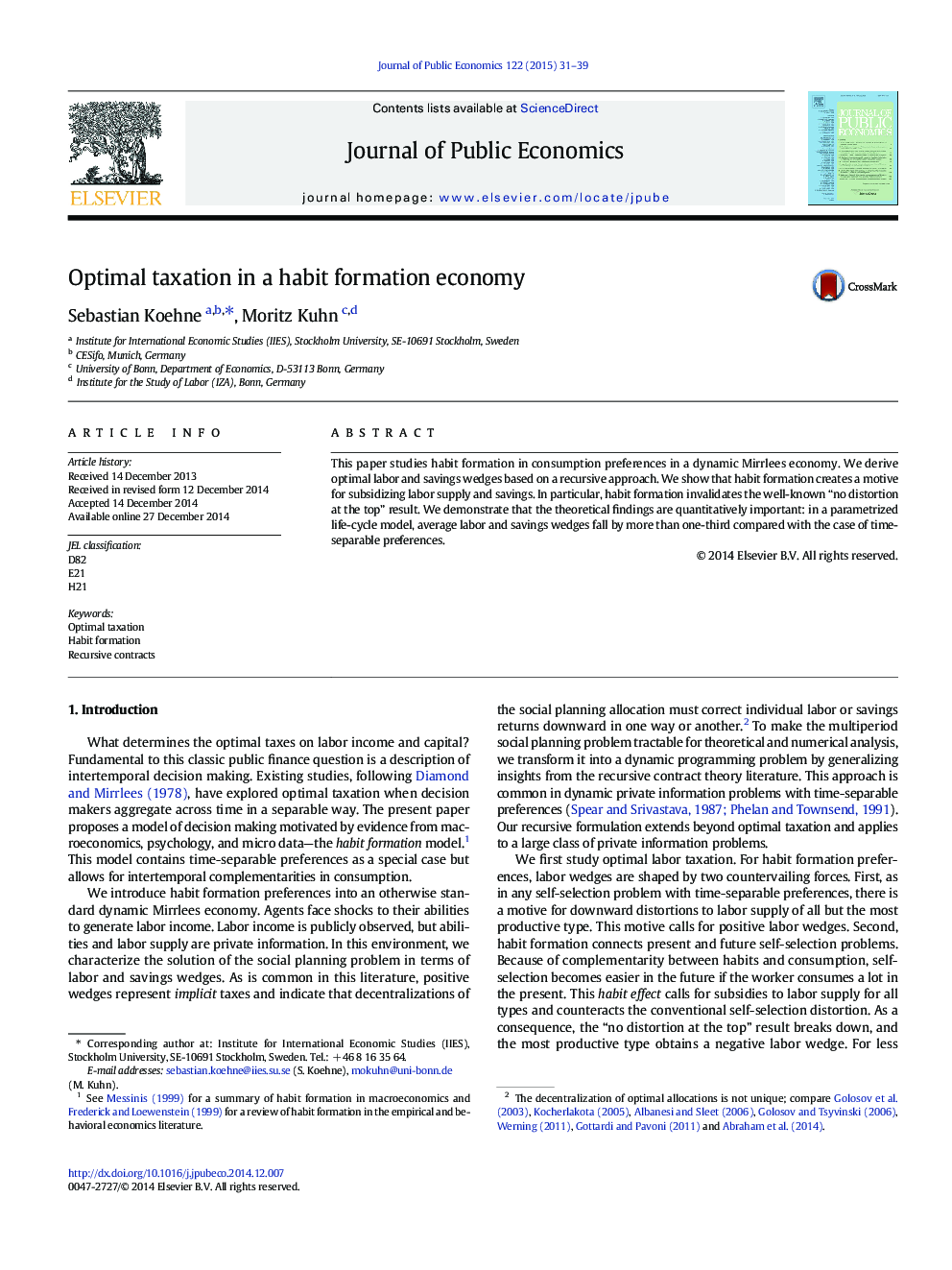| Article ID | Journal | Published Year | Pages | File Type |
|---|---|---|---|---|
| 7370067 | Journal of Public Economics | 2015 | 9 Pages |
Abstract
This paper studies habit formation in consumption preferences in a dynamic Mirrlees economy. We derive optimal labor and savings wedges based on a recursive approach. We show that habit formation creates a motive for subsidizing labor supply and savings. In particular, habit formation invalidates the well-known “no distortion at the top” result. We demonstrate that the theoretical findings are quantitatively important: in a parametrized life-cycle model, average labor and savings wedges fall by more than one-third compared with the case of time-separable preferences.
Related Topics
Social Sciences and Humanities
Economics, Econometrics and Finance
Economics and Econometrics
Authors
Sebastian Koehne, Moritz Kuhn,
